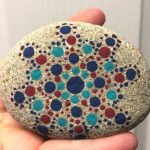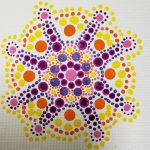Mandala Art and Epilepsy
Mandala art is a therapeutic practice that promotes relaxation, mindfulness, and emotional expression. For individuals living with epilepsy, this creative outlet can offer significant mental and emotional support. It provides a calming experience while allowing the freedom to explore one’s emotions, reduce anxiety, and promote a sense of connection and peace. In this program, we aim to integrate the therapeutic benefits of Mandala art to help individuals manage the emotional and psychological effects of epilepsy.
Take a look at the incredible artwork created by some of our clients!







Sign up for our monthly mandala art session at: https://esebc.ca/mandala-art-registration/
Benefits of Mandala Art
Mandala art is a therapeutic practice that promotes relaxation, mindfulness, and emotional expression. For individuals living with epilepsy, this creative outlet can offer significant mental and emotional support. It provides a calming experience while allowing the freedom to explore one’s emotions, reduce anxiety, and promote a sense of connection and peace. In this program, we aim to integrate the therapeutic benefits of Mandala art to help individuals manage the emotional and psychological effects of epilepsy.
Reduces Anxiety and Stress
Living with epilepsy can create feelings of stress and anxiety due to the unpredictability of seizures. Mandala art provides a peaceful, meditative experience that helps reduce these feelings. The repetitive nature of coloring or creating mandalas promotes relaxation and mindfulness, lowering cortisol levels and encouraging a calm state of mind. This makes it a valuable tool for stress management and emotional regulation.
By focusing on the patterns and colors, individuals can shift their attention from worries and stressful thoughts, creating a sense of inner peace and calm. Engaging in regular mandala art practice can help individuals with epilepsy maintain a balanced emotional state.
Promotes Mindfulness and Emotional Balance
Mandala art encourages mindfulness by inviting individuals to stay present in the moment. As participants focus on each intricate detail of the design, they naturally become more aware of their emotions and thoughts. This mindfulness practice is especially beneficial for those with epilepsy, as it helps them manage emotions that may arise from the challenges of living with the condition.
Creating or coloring mandalas offers a safe, non-verbal outlet for expressing emotions. This can be particularly helpful for those experiencing frustration, sadness, or anxiety. By focusing on the task at hand, individuals can experience a sense of emotional balance and well-being.
Improves Cognitive Focus
Epilepsy can affect cognitive functions such as memory, concentration, and mental clarity. Mandala art engages the brain by requiring focus and attention to detail. This practice helps to improve cognitive function, including concentration and mental clarity. The process of working through the design stimulates brain activity, which can strengthen neural connections and enhance cognitive abilities.
Engaging in regular mandala art practice can help individuals with epilepsy improve their focus, memory, and mental processing. As individuals challenge themselves with more complex designs, they can further enhance their cognitive skills and mental clarity.
Builds a Sense of Accomplishment
For individuals living with epilepsy, the unpredictability of the condition can sometimes lead to feelings of helplessness. Mandala art offers a structured activity that provides a sense of control and accomplishment. Completing a mandala design, whether it’s drawing or coloring, gives individuals a tangible sense of achievement.
This sense of accomplishment helps boost self-esteem and confidence. The process of working on a mandala also encourages creativity and self-expression, which can foster a sense of empowerment and personal growth.
Encourages Social Connection
While mandala art is often a solitary activity, it can also be a shared experience. Participating in group art sessions or workshops provides an opportunity to connect with others, share experiences, and offer support. This can help individuals with epilepsy combat feelings of isolation and build a sense of community.
By engaging in mandala art within a group setting, individuals can find comfort in knowing they are not alone in their journey. Social connections formed through shared creative experiences can foster emotional support and promote a sense of belonging.
Get Started with Mandala Art
Mandala art is a simple yet powerful tool for individuals with epilepsy to improve mental health, reduce stress, and foster creativity. Whether you’re looking to alleviate anxiety, enhance focus, or express your emotions, mandala art provides a holistic approach to well-being. If you’re interested in starting your own mandala art practice or would like more information on how it can benefit you, reach out to our Program Manager for guidance and support.
